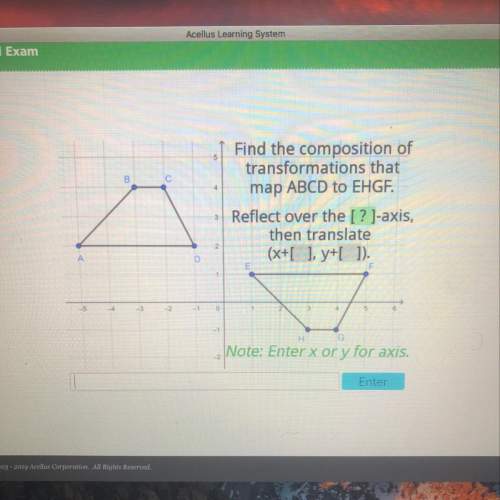
Mathematics, 14.07.2019 02:00 Ayalij
10 points and ! the number of toys owned by eight classmates is shown below: 4, 3, 4, 5, 6, 6, 8, 4 part a: what is the mean of the data? show your work. (4 points) part b: use your answer from part a to calculate the mean absolute deviation for the data. show your work. (6 points) question 3 (essay worth 10 points) (08.03; 08.04 mc) a group of 10 students participated in a quiz competition. their scores are shown below: 4, 4, 3, 4, 3, 12, 4, 3, 2, 3 part a: would a dot plot, a histogram, or a box plot best represent the data shown above if the purpose of the graph is to highlight the frequency of each individual score? explain your answer. (4 points) part b: provide a step-by-step description of how you would create the graph named in part a. (6 points) question 4 (essay worth 10 points) (08.05; 08.06 hc) the box plot below shows the total amount of time, in minutes, the students of a class surf the internet every day: a box plot is shown. the left-most point on the plot is 20 and the right-most point is 95. the box is labeled 37.5 on the left edge and 60 on the right edge. a vertical line is drawn inside the rectangle at the point 50. part a: list two pieces of information that are provided by the graph and one piece of information that is not provided by the graph. (4 points) part b: calculate the interquartile range of the data, and explain in a sentence or two what it represents. (4 points) part c: explain what affect, if any, there will be if an outlier is present. (2 points)

Answers: 1


Other questions on the subject: Mathematics

Mathematics, 21.06.2019 21:30, gonzalezashley152
In a test for esp (extrasensory perception), the experimenter looks at cards that are hidden from the subject. each card contains either a star, a circle, a wave, a cross or a square.(five shapes) as the experimenter looks at each of 20 cards in turn, the subject names the shape on the card. when the esp study described above discovers a subject whose performance appears to be better than guessing, the study continues at greater length. the experimenter looks at many cards bearing one of five shapes (star, square, circle, wave, and cross) in an order determined by random numbers. the subject cannot see the experimenter as he looks at each card in turn, in order to avoid any possible nonverbal clues. the answers of a subject who does not have esp should be independent observations, each with probability 1/5 of success. we record 1000 attempts. which of the following assumptions must be met in order to solve this problem? it's reasonable to assume normality 0.8(1000), 0.2(1000)%30 approximately normal 0.8(1000), 0.2(1000)% 10 approximately normal srs it is reasonable to assume the total number of cards is over 10,000 it is reasonable to assume the total number of cards is over 1000
Answers: 1

Mathematics, 21.06.2019 23:30, kreshnikolloma
Which of these angles are complementary? a. 45o and 45o b. 63o and 117o c. 45o and 135o d. 90o and 45o
Answers: 1

Mathematics, 22.06.2019 02:20, IkweWolf1824
Find the volume of the wedge cut from the first octant by the cylinder z=12-3y^2 and the plane x+y=2.
Answers: 1

Mathematics, 22.06.2019 03:00, webbhlharryteach
Out of five men and five women, we form a committee consisting of four different people. assuming that each committee of size four is equally likely, find the probabilities of the following events: 1. the committee consists of two men and two women 2. the committee has more women than men. 3. the committee has at least one man. for the remainder of the problem assume that alice and bob are among the ten people being considered. 4. both alice and bob are members of the committee.
Answers: 2
You know the right answer?
10 points and ! the number of toys owned by eight classmates is shown below: 4, 3, 4, 5, 6, 6, 8,...
Questions in other subjects:

Mathematics, 05.10.2019 08:00



Mathematics, 05.10.2019 08:00




History, 05.10.2019 08:00

Spanish, 05.10.2019 08:00

History, 05.10.2019 08:00




